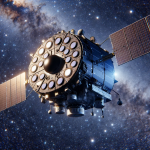Tesla vehicles have long been criticized for their high repair costs and parts scarcity. However, a Tesla-certified repair shop in Australia, Luxury Auto Body, claims that these perceptions no longer hold true. The shop contends that the costs and availability of Tesla repairs are now on par with other automakers. For further details, you can visit Luxury Auto Body. This shift signifies a notable improvement in Tesla’s repair ecosystem, aiming to dispel long-standing myths.
Repair Costs Analysis
Danny, a panel beater with over 30 years of experience at Luxury Auto Body, shared insights with Drive, revealing that Tesla repair costs usually fall between AU$4500 (US$3000) and AU$5000 (US$3300). He highlighted that some Tesla parts, such as bumper bars, are considerably inexpensive. However, components like airbags and suspension systems, while more costly, are still cheaper compared to premium brands like BMW and Mercedes-Benz.
Front vs. Rear Impact Repairs
Interestingly, the panel beater noted significant differences in repair costs based on the vehicle’s impact location. Front-end repairs, even with extensive damage such as airbag deployment, typically cost around AU$25000 (US$16600). On the other hand, rear-end repairs are more complex, potentially reaching AU$45000 (US$30000). Despite these costs, similar repairs for BMW or Mercedes-Benz vehicles could be as high as AU$60000 (US$39800).
Parts Availability and Quality
Teslas are known for their advanced sensor and camera systems, all of which can be calibrated in-house, making them comparable to other vehicles in terms of repair complexity. Last year, Tesla reinforced its commitment to customer service by opening a sales, service, and parts hub in Auckland. This initiative has generally improved parts availability, reducing wait times significantly. Danny emphasized that the build quality of Teslas aligns with mass-market automakers, making them reliable for daily use.
Earlier reports echoed concerns about Tesla repair expenses and parts scarcity, accentuated by customer grievances and media reports. Some articles highlighted prolonged wait times for parts, making it difficult for owners to get their vehicles back on the road. Contrarily, recent efforts by Tesla to streamline parts distribution and enhance service centers have been aimed at mitigating these issues.
However, industry experts have pointed out that while Tesla has made strides in reducing repair costs, challenges still exist in certain regions. For instance, smaller markets with fewer service centers might still experience delays. Despite these challenges, Tesla’s ongoing efforts to improve its service infrastructure seem to be yielding positive results, gradually changing the narrative around its repair ecosystem.
Tesla’s repair ecosystem appears to have made significant strides in aligning with industry standards. The improved parts availability and more reasonable repair costs benefit Tesla owners, making the electric vehicle brand a more attractive option for potential buyers. However, the complexity of rear-end repairs and regional disparities in service center availability remain areas needing further attention. Overall, Tesla’s ongoing improvements in this area suggest a promising future for both current and prospective Tesla owners.










